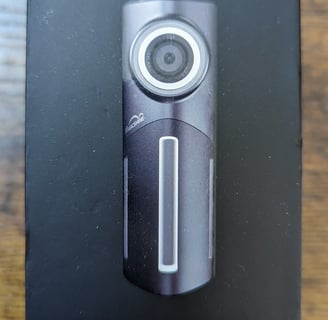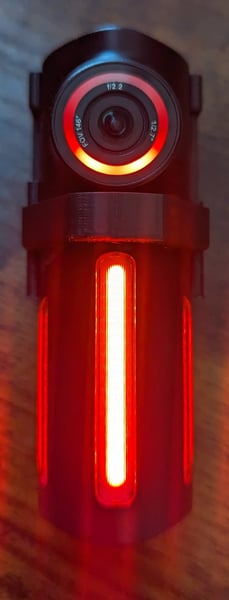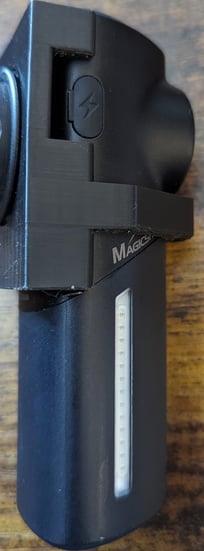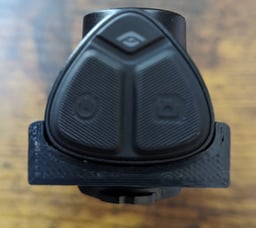Magicshine SeeMee DV
Rear facing cycling camera and light
SRM
9/23/20233 min read


This compact camera was one I had high hopes for, aiming to ensure it functions seamlessly for a variety of reasons we will discuss below. However, I encountered a series of challenges.
Let's begin by examining its design. The camera's body is constructed from aluminum and exudes a sturdy feel. It takes on a rounded triangular shape, with dimensions of approximately 1 1/4" in width and about 3 3/4" in length. The bottom half features three light strips, offering visibility from over 180 degrees. The camera is positioned at the top, with two buttons on the very apex. The side is equipped with a cover for an SD card slot and another for the USB-C charging port. The back of the camera is where I encountered my initial issue.
The mount, known as the SeeMee mount, is tailor-made for Magicshine products. The package includes both a banded mount for the seatpost and a hanger for the saddle rails. The mount itself bears a resemblance to a half-sized Garmin twist mount. My first issue arose due to its relatively small size, leading to noticeable camera bouncing during rides, primarily because of its top placement and the weight of the battery hanging below, negatively impacting video quality.
The subsequent issue revolves around the mount being constructed from plastic and secured with a single screw in the middle. After a few adjustments, it started to twist and spin, necessitating its removal for further examination. The screw required a 1.5mm Allen wrench, which, regrettably, I did not have. After finally managing to loosen it, the screw exhibited signs of wear and tear on the head. Upon removing the mount, I discovered two small plastic tabs designed to prevent rotation, one of which had broken off, allowing it to rotate freely under pressure. This led to my first concern - the two tabs passed through cutouts in the back of the aluminum body, leaving circuit boards exposed without any protective seal. Consequently, if water found its way back here, it could potentially compromise the device.
Efforts to procure a replacement part proved futile, prompting me to initially experiment with epoxy as a solution. Although I managed to secure it, there was a slight tilt, resulting in the camera hanging slightly off-center - a source of considerable frustration. Subsequently, I decided to craft my own mount using a Garmin mount, which, while bulkier, significantly reduced camera bouncing.
From this point forward, I enjoyed using the device. The app, a generic DVR app on Android, was sufficient for making minor setting adjustments and facilitating live video feed review and playback of stored files.
The device's illumination was impressively bright, offering a solid bright mode, a solid low mode, and two flashing modes, with one being brighter than the other. My sole complaint in this regard was the relatively slow blinking frequency, coupled with extended periods of being off.
As I continued to use the device and refined the mount with various new designs and prints, a new set of challenges emerged. Around the time I believed I had reached a final design, the device began displaying a flashing white light around the camera. According to the manual, this indicated a "bad" or irregular state, although the precise nature of this irregularity remained uncertain. I attempted various measures to restore its recording capabilities, some of which yielded results, albeit inconsistently. Additionally, I observed that even a minor bump to the device could trigger the flashing white light. The frustration mounted, and I began to doubt the device's reliability as a safety recording DVR. I reached out to the manufacturer via email, but as I had purchased the device from an eBay seller, I found myself in a somewhat uncertain situation. The course of action from here remains to be seen.
UPDATE: After speaking with the manufacturer they had asked me to reseat the SD card. This seems to have helped. Guess a good jolt can knock the connection loose.






